- News
- Reviews
- Bikes
- Accessories
- Accessories - misc
- Computer mounts
- Bags
- Bar ends
- Bike bags & cases
- Bottle cages
- Bottles
- Cameras
- Car racks
- Child seats
- Computers
- Glasses
- GPS units
- Helmets
- Lights - front
- Lights - rear
- Lights - sets
- Locks
- Mirrors
- Mudguards
- Racks
- Pumps & CO2 inflators
- Puncture kits
- Reflectives
- Smart watches
- Stands and racks
- Trailers
- Clothing
- Components
- Bar tape & grips
- Bottom brackets
- Brake & gear cables
- Brake & STI levers
- Brake pads & spares
- Brakes
- Cassettes & freewheels
- Chains
- Chainsets & chainrings
- Derailleurs - front
- Derailleurs - rear
- Forks
- Gear levers & shifters
- Groupsets
- Handlebars & extensions
- Headsets
- Hubs
- Inner tubes
- Pedals
- Quick releases & skewers
- Saddles
- Seatposts
- Stems
- Wheels
- Tyres
- Health, fitness and nutrition
- Tools and workshop
- Miscellaneous
- Buyers Guides
- Features
- Forum
- Recommends
- Podcast
BUYER'S GUIDE
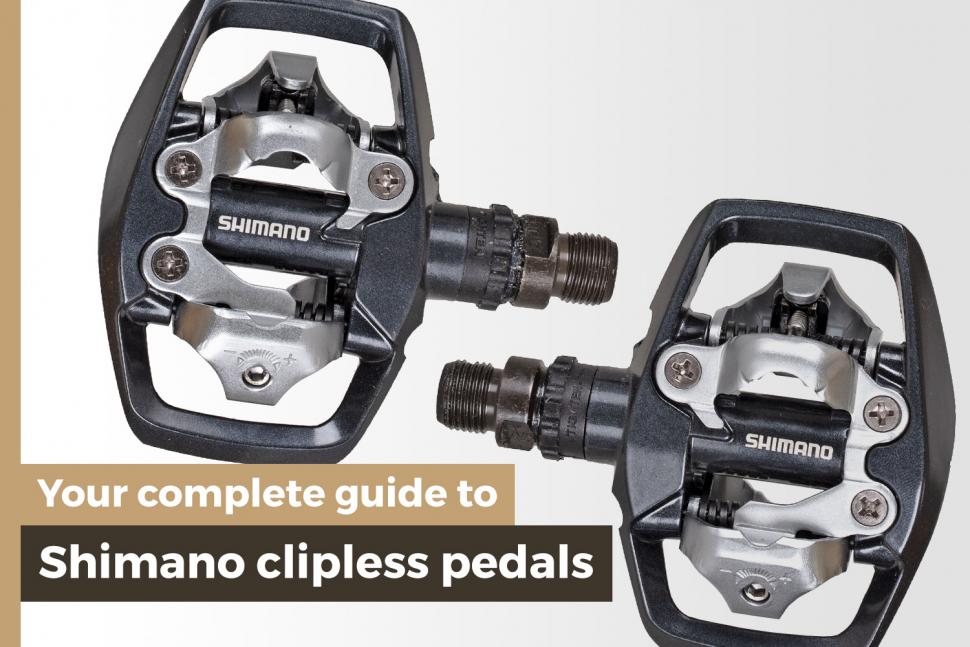 Your complete guide to Shimano clipless pedals April 2022
Your complete guide to Shimano clipless pedals April 2022Shimano clipless pedals 2022 — your complete guide
Take a dive with us into all your options in Shimano clipless pedals suitable for road riding, commuting, touring and gravel bike riding. Whether you're racing the Dirty Reiver, riding with your club, lining up at your local crit circuit, exploring dirt roads or just popping to the shops there's a pedal to suit you here.
Shimano clipless pedals are justifiably popular. It's impossible to get detailed figures but the sheer number of them out there suggests Shimano's SPD is the dominant clipless pedal system for recreational riders, commuters and of course the off-road riders it was originally created for.
The SPD-SL system had to muscle its way into a crowded market when it was launched in 2002 but won fans for its stability, ease of entry and the pedal's wide base of support for its cleats. It didn't hurt that Lance Armstrong's name was attached to the project either. For years Armstrong used Dura-Ace PD-7401 pedals from the 1990s. Look made the pedal bodies and Shimano supplied the bearings. The first SPD-SL pedals, PD-7750 looked and worked enough like those pedals to get Armstrong to switch over and the rest is history.
Without further ado, here's the current Shimano clipless pedal range except for a couple of models aimed firmly at downhill mountain bike racing and BMX racing.
Shimano clipless pedals 2022 — the full range
Shimano Dura-Ace PD-R9100 pedals — Buy Now for £159.00 from Evans Cycles
Claimed weight: 228g
These are Shimano's professional-quality road pedals, with lightweight carbon-fibre bodies, hollow cleat bolts and blue cleats with two degrees of float. Key features include a better bearing system that other SPD-SL pedals, a 66mm-wide platform, a wide range of tension adjustment, and a three-year guarantee. There's also an option of a 4mm-longer axle if you prefer a wider stance or more shoe/crank clearance.
Their broad platform is one of the best things about these pedals, and is especially welcome when you're riding out of the saddle. We've found the Dura-Ace 9100 pedals to be solid and reliable and there's every indication that, like their predecessors, they'll prove to be durable too.
Buy if: You’re a performance-orientated rider who wants Shimano’s best.
Read our review of the Shimano Dura-Ace PD-R9100 pedals
Find a Shimano dealer
Shimano Ultegra PD-R8000 pedals — Buy Now for £101.00 from Mantel
Claimed weight: 248g
As is typical for parts in Shimano's everyman Ultegra R8000 series, these pedals are a small step down from Dura-Ace in refinement, but give away almost nothing in function. They come with Shimano's yellow cleats that give six degrees of float and like Dura-Ace they're available with 4mm longer axles, but aside from only having two bearings in the axle cartridge rather than three, they're very hard to tell apart from Dura-Ace pedals.
In terms of features, value and durability, these are the sweet-spot pedals in Shimano's SPD-SL line up.
Buy if: You want most of the performance of Dura-Ace for 2/3 of the price.
Shimano 105 PD-R7000 pedals — Buy Now for £80.80 from Mantel
Claimed weight: 265g
The 105 versions of Shimano's carbon-bodied SPD-SLs have just three small downsides over Ultegra: they're 17g/pr heavier, a fraction taller (16.5mm stack v 14.6mm for Ultegra) and Shimano says you can't corner quite as hard in them while pedalling, with a cornering angle of 31° versus the 33° of Ultegra and 34° or Dura-Ace.
Despite that, they're indistinguishable in use from the more expensive Ultegra pedals and even come with the same yellow cleats with 6° of float.
Buy if: You want Shimano’s best-value carbon pedals.
Read our review of the Shimano 105 PD-R7000 pedals
Find a Shimano dealer
Shimano PD-R550 pedals — Buy Now for £52.20 from Mantel
Claimed weight: 310g
Available in black or grey, Shimano calls the body material of these budget pedals 'composite', which says to us it's likely fibreglass-reinforced resin; no bad thing in a relatively inexpensive pedal to keep the parts budget under control. Otherwise the feature set is very similar to the pedals above it in the range: a stainless steel wear plate, screwed to the body rather than embedded; 32° cornering; 16.5mm stack and yellow cleats with 6° of float.
Buy if: You want SPD-SL pedals for everyday use.
Shimano PD-RS500 pedals — Buy Now for £39.50 from Mantel
Claimed weight: 320g
The principal talking point of these pedals is the lower exit and entry force compared to other SPD-SL pedals. That makes them more suitable for riders who are new to clipless pedals, though newbies are probably best off using double-sided SPDs.
The RS500 pedals use the same axle unit as the R550 but it screws into a cheaper body which results in a bit more weight and lower cornering angle thanks to increased bulk. You still get stainless steel wear plates on the body though, a big improvement on previous SPD-SL pedals at this level. If you come across the old R540 pedals secondhand, don't be tempted unless they're very cheap; buy these instead.
Buy if: You’re new to single-sided pedals and want easier release.
Shimano XTR PD-M9100 pedals — Buy Now for £106.24 from Winstanleys Bikes
Claimed weight: 314g
XTR is the off-road equivalent of Dura-Ace so what you'd expect from these pedals is low weight, excellent performance, and a three-year guarantee. And that's exactly what you get.
Like most SPD pedals they're double-sided for easy clipping in, and there's plenty of room in the body for mud to pass through should your off-road antics get gloopy. There's an option with 3mm shorter axles for riders who want a narrower stance and Shimano has trimmed as much metal as possible from the body to get your foot close to the axle for stability.
Buy if: You want Shimano’s lightest double-sided pedals for gravel racing and performance riding.
Shimano XTR PD-M9120 pedals — Buy Now for £110.49 from Winstanleys Bikes
Claimed weight: 398g
The M9120 pedals are essentially the same as M9100s but with extensions fore and aft to give better support for your shoes. It's an idea Shimano introduced with the legendary big red M636 pedals in the 90s and has been refining for different purposes ever since.
Buy if: You want light high-performance pedals with extra foot support.
Shimano Deore XT PD-M8100 pedals — Buy Now for £84.99 from ProBikeKit
Claimed weight: 342g
In the beginning was the PD-M737, Shimano's first clipless pedal, aimed at mountain bikers and part of the Deore XT series, at the time Shimano's top-level off-road groupset. With far less mass, much better mud clearance and a simpler mechanism this latest version nevertheless carries the clipped-in torch the 737s lit over 30 years ago.
They're essentially very similar to the XTR version, with just a bit more bulk to the pedal body, making them 32g/pr heavier. As a result, they provide a bit more support for your feet compared to XTRs or the two cheaper compact SPD pedals. They spin on very similar axle unit to the XTRs too; heck, it's very similar to the axle unit of the original 737s and there are tales of them lasting 25 years of off-road shenanigans.
Buy if: You want the latest version of a Shimano classic for gravel riding.
Shimano Deore XT PD-M8120 pedals — Buy Now for £83.99 from ProBikeKit
Claimed weight: 438g
Take the Deore XT SPD pedal, extend it fore and aft to provide more foot support and you have a trail, gravel and touring pedal par excellence. For anything but racing, these are probably the best off-road pedals Shimano make.
Buy if: You want Deore XT quality with more shoe support.
Shimano PD-M540 pedals — Buy Now for £51.99 from ProBikeKit
Claimed weight: 352g
Depending on how you look at it the PD-M540s are either a more refined version of the M520 pedals, or a less sophisticated incarnation of the Depre XT compact SPDs. Entry and exit is positive, with a good range of adjustability in the spring tension to suit all styles of riding and types of rider.
The only significant differences between these pedals and their cheaper siblings are that the axle is slimmer and doesn't have spanner flats, so you have to fit them with an hex key from the rear of the crank; and the lockring that holds the bearings in is metal instead of plastic. These really are excellent pedals. The only issue with them is that the equally excellent PD-M520 is quite a lot cheaper.
Buy if: You want durable double-sided pedals at a good price.
Read our review of the Shimano PD-M540 pedals
Find a Shimano dealer
Shimano PD-M520 pedals — Buy Now for £29.99 from Decathlon
Claimed weight: 380g
These are nominally compact SPD mountain bike pedals, but you'll find them everywhere from full sussers to expedition tourers via Audax and commuting bikes. They're pretty cheap at a list price of 45 quid (and you'll certainly find them cheaper than that), but that's not reflected in the build quality, which is excellent, or the performance, which is also excellent.
Tester Big Dave writes: "Whenever the issue of SPDs versus 'road' pedals comes up, there's normally plenty of discussion as to whether you need that bigger platform. It's fair to say that at the level I ride the small SPD cleat has never been an issue for me in terms of function or comfort - all my longest rides have been on SPDs - and the convenience of having the same system on every bike outweighs any tiny incremental gains in efficiency. Plus, MTB race shoes look fine with a road bike and you can walk in them at the caf. Everyone's a winner."
Buy if: You want double-sided pedals that don’t cost much but go on forever.
Shimano PD-ME700 pedals — Buy Now for £34.99 from Decathlon
Claimed weight: 540g
The PD-ME700 pedals are to M520s what M8120s are to Deore XT M8100: much the same mechanism and internals with an extended platform for more foot support. They nominally replace the M530 pedals, below, and have a wider body than those, making them the better bet for most riders.
The only real downside here is their weight, although there are reports that they actually weigh significantly less than Shimano claim, tipping the scales at 480-485g. (That's unusual; Shimano's stated weights are routinely within a few grams of reality.)
Buy if: You want pedals with lots of shoe support on a budget.
Shimano PD-M530 pedals — Buy Now for £37.11 from Amazon
Claimed weight: 455g
These pedals have nominally been replaced by the ME700s, above, but such is the length and duration of Shimano's supply chain that there are plenty of M530s still around. Shimano say these pedals are designed for cross country riding and technical descending, we've done a lot of both and have found the cleat interface easy to locate on every occasion. The cleat snaps into the pedal with a resounding click that can be felt as well as heard, meaning you're never left in that no-mans-land wondering "am I clipped in?"
However, unless weight really matters to you, the ME700s are the better buy. Not only can they be found for less money, but the larger platform provides more support for your feet, albeit at the expense of a bit more chance of grounding on rocks and in corners.
Buy if: You want pedals with extra support on a budget.
Read our review of the Shimano PD-M530 pedals
Find a Shimano dealer
Shimano PD-M424 pedals — Buy Now for £34.83 from Ali Express
Claimed weight: 472g
The big red M636 pedals mentioned above debuted a feature also found here: a pop-up mechanism that makes it easier to clip in because the front hook presents itself exactly where you want it when you stamp down on the pedal.
As well as making it easier to clip in, this design makes it possible to provide a platform round the pedal that supports more of your shoe. In turn, that means you can wear softer, more walkable shoes.
Now for the bad news: Shimano have discontinued these pedals, although they're still listed on Shimano's website so they're very hard to find. Your best bet at the moment is to search eBay and chuckle indulgently at the silly prices some people are asking.
Buy if: You want easy-entry pedals with loads of support.
Shimano PD-M324 pedals — Buy Now for £43.99 from Tweeks Cycles
Claimed weight: 533g
There can't be many bike components that are still being made after more than 20 years; the PD-M324 pedals were introduced for the 2001 model year and are still going strong because they Just Work™. On one side you've an SPD mechanism moulded into the pedal body, and on the other there's an old school cage pedal; you could even add clips and straps if you wanted to.
The SPD mechanism is much the same as you'll find on Shimano's other pedals, with a good range of tension adjustment and enough float for most knees. The cage is nice and grippy and performs well in the wet as well as the dry.
These pedals come with Shimano's beginner-friendly SM56 Multi-release cleats. These are great for anyone nervous about clipless pedals because they allow you to pull up to release.
However, as Woldsman points out in the comments these are the only Shimano clipless pedals that require the expensive and hard-to-find Shimano TL-PD63 tool to adjust the bearings, because you can't pull out the whole axle and bearings as one unit like all the other pedals here. If you do your own maintenance, even the PD-T8000s work out cheaper.
Buy if: You want Shimano’s original pedals that work with any shoes.
Read our review of the Shimano PD-M324 pedals
Find a Shimano dealer
Shimano Deore XT PD-T8000 pedals — Buy Now for £67.99 from ProBikeKit
Claimed weight: 392g
The Shimano XT PD-T8000 trekking pedals are an ideal option if clipping in isn't always your preference – tourers, commuters, gravellers, bikepackers and newbies to clipless will all find much to like. They are well-constructed pedals with very little going against them. They're quite spendy, but they earn it.
Time marches on. Since the inception of the M324 pedals, riders who favour flat pedals have discovered the usefulness of steel pins to help regular shoes stick to pedals; they work best with soft-soled BMX, downhill and skate shoes, but pretty well with anything that has a rubber sole. These pedals have a comfortable, slightly concave profile with eight pins, and you get two lengths – a 5mm set and a 7mm.
Buy if: You want a more sophisticated pedal that works with any shoes.
Read our review of the Shimano Deore XT PD-T8000 pedals
Find a Shimano dealer
Shimano PD-ES600 pedals — Buy Now for £65.00 from Evans Cycles
Claimed weight: 279g
The Shimano PD-ES600s are Ultegra-level, single-sided SPD road pedals, and they are very good: small, light, and with enough foot support to be perfect for those who like to put in the miles but still walk around a bit.
Each ES600 has one set of cleat jaws sitting proud of what looks like a small version of a 'normal' road pedal. The flat platforms either side of the pedal are there to offer a level of support to the tread on the bottom of your recessed cleat shoes, and it's something they do pretty well.
The one downside of the ES600s, especially compared to the now-almost unobtainable A600 pedals they replaced, is that they hang at an angle that makes entry a bit awkward compared to dual-sided SPDs and even compared to single-sided SPD-SLs. Shimano has slid these pedals into its GRX gravel groupset line-up, but the single-sided toe-first aspect might get annoying if you ride terrain that requires frequent clipping in and out through technical sections.
Buy if: You want a light single-sided pedal for gravel or touring.
Shimano PD-EH500 pedals — Buy Now for £55.99 from Tweeks Cycles
Claimed weight: 383g
Cheaper and, oddly, lighter than the PD-T8000s, these combination pedals take their styling cues from mountain bike flatties and have a light action mechanism for easier unclipping. The flat side again has eight steel pins and a gentle curve to help keep you located when you're not using cleated shoes.
EH500s also come with Shimano's beginner-friendly SM56 multi-release cleats, which allow you to get out of the pedals by pulling up as well as twisting out.
Buy if: You want to be able to ride either clipped-in or with soft-soled shoes.
Shimano PD-ED500 pedals — Buy Now for £40.98 from Amazon
Claimed weight: 442g
The ED500s are dual-sided mini-platform pedals with light action mechanisms and SH56 Multi-release cleats. Shimano classes them as trekking pedals which is European bike industry code for a range of uses including round-town riding and touring.
As such, this is a very sensible use for a light action mechanism and multi-release cleats, giving the efficiency of being held in place on the pedal with the ease of escape afforded by the low-tension clamp. The mini-platform will also help with getting clipped in. With the demise of the PD-T400 Click'R pedal, this is Shimano's only dual-SPD light action pedal.
Buy if: You want extra shoe support with easy-release light action mechanism.
Shimano Deore LX Click'R PD-T421 pedals — Buy Now for £35.00 from Tri UK
Claimed weight: 418g
Click'R is Shimamo's name for a range of pedals that all included a pop-up mechanism, a lighter spring action for easier entry and exit, and SM-SH56 cleats for upward as well as twisting release. There were originally several models, but most have been discontinued; only these remain, with a flat platform one side and an SPD mechanism the other.
When we tested the dual-SPD version, the PD-T400s, we said "for anyone keen to try clipless pedals for the first time, but worried about being unable to unclip at a junction or emergency stop, the quick and featherlight release mechanism on the T400s makes them highly recommended."
Buy if: You want Shimano’s most beginner-friendly clipless.
Shimano clipless pedals at a glance
| Model | Type | Weight | Cleats | Options & comments |
|---|---|---|---|---|
| PD-R9100 | SPD-SL | 228g | SM-SH12 | 4mm longer axle |
| PD-R8000 | SPD-SL | 248g | SM-SH11 | 4mm longer axle |
| 105 PD-R7000 | SPD-SL | 265g | SM-SH11 | |
| PD-R550 | SPD-SL | 310g | SM-SH11 | Wider spring tension range |
| PD-RS500 | SPD-SL | 320g | SM-SH11 | Lighter spring tension |
| XTR PD-M9100 | SPD | 314g | SM-SH51 | 3mm shorter axle available |
| XTR PD-M9120 | SPD | 398g | SM-SH51 | |
| PD-M8100 | SPD | 342g | SM-SH51 | |
| PD-M8120 | SPD | 438g | SM-SH51 | |
| PD-M540 | SPD | 352g | SM-SH51 | |
| PD-M520 | SPD | 380g | SM-SH51 | |
| PD-ME700 | SPD | 540g | SM-SH51 | |
| PD-M530 | SPD | 455g | SM-SH51 | |
| PD-M424 | SPD | 472g | SM-SH51 | |
| PD-M324 | SPD/flat | 533g | SM-SH56 | |
| PD-T8000 | SPD | 392g | SM-SH56 | |
| PD-ES600 | SPD | 279g | SM-SH51 | |
| PD-EH500 | SPD light action/flat | 383g | SM-SH56 | |
| PD-ED500 | SPD light action | 442g | SM-SH56 | |
| PD-T421 | SPD light action/flat | 418g | SM-SH56 |
Things to know about Shimano clipless pedals
Sole music
SPD pedals are intended for use with shoes that have two slots in the sole backed by nuts to take the cleat bolts. The slots provide fore and aft adjustment so you can get the cleat in a comfortable place under the ball of your foot and the cleat can be moved sideways on the bolts for a bit of left/right tweaking.
In most SPD shoes the slots are located in a large recess surrounded by the rubber of the outsole; the cleats actually grip the a still plate in the midsole. The recess makes it easy to walk in these shoes because the cleat doesn't stick out, and also helps guide the cleat on to the pedal mechanism when you clip in.
SPD-SL cleats fit directly to the outside of the sole, using the three-bolt mounting pioneered by Look. That means they stand proud of the shoe which makes walking quite awkward. The nuts in the sole are sometimes fixed in position; fore-aft and left-right adjustment comes from the slots in the cleats and the oversized washers under the cleat screws. However, some shoe makers use slots to provide a bit more fore-aft adjustment.
A very few shoe makers offer shoes with both two-bolt and three-bolt fitments; an SPD cleat sits proud of the sole on these shoes.
If you want to fit SPD cleats to three-bolt shoes, then Shimano, Sidi and Xpedo/Wellgo all offer adapters to enable this.
Tension adjustment
All Shimano clipless pedals have an adjustment screw with which you can change the force needed to get out of the pedals. For most pedals you have a range of adjustment from 'not very tight' to 'very tight indeed'. Light action pedals range from 'very easy to get out' to 'quite easy to get out' in keeping with their mission of reassuring newbies that they're not in fact irrevocably attached to the bike.
As well as adjusting for how firmly you want to be held in the pedals, the tension adjuster also lets you tailor the pedals to suit the size of your feet. If you have small feet then you haven't got as much leverage to exert a torque over the cleat as someone with size 12s. In general it's a good idea to start your clipless pedal journey with the pedals set to the lightest release tension; for riders with small feet it's all but essential.
Cleats & float
Shimano makes a range of cleats for SPD and SPD-SL pedals, with two versions for SPD and three for SPD-SL.
On their explainer page extolling the virtues of SPD Shimano says "In a testament to how good that original SPD design was, it has not changed since 1990." Arguably that's not quite true, because as well as going to a mechanism that only works at the back of the cleat (unlike the original PD-M737's double-ended mechanism) Shimano changed the standard SPD cleat from the original SM-SH50 which had zero float, to the current black SM-SH51 with six degrees of float. (That's according to Shimano's PR guy at the time Ben Hillsdon. Other sources put it at four degrees.)
Float, in case you're not familiar with the term, is the freedom of movement of a cleat within the pedal. It most commonly refers to rotational movement, so the SM-SH51 cleat can turn through six degrees before it starts to actuate the pedal's release mechanism. SPD cleats also have a small amount of lateral float, able to move a couple of milimetres sideways in the pedal.
The silver multi-release SM-SH56 cleats have the same float as SM-SH51 cleats, but are shaped slightly differently so they release from the pedals if pulled upward firmly, as well as when twisted. You find SM-SH56 in the box with pedals aimed at beginner and less performance-orientated riders who, Shimano reasons, don't want to be as firmly attached to the pedal as more experienced and, for wont of a better word, serious riders.
Road-going SPD-SL pedals come in three colour-coded variants and Shimano has created this handy graphic to illustrate them.
In short, there are three versions: SM-SH10 cleats with red highlights have no float; blue-highlighted SM-SH12 cleats have two degrees of rotational float; and yellow SM-SH11 cleats have six degrees of float.
However, it's not quite that straightforward. Blue cleats rotate around the tip of the cleat, while yellow cleats rotate around the cleat centre and can therefore move from side to side slightly too. This gives a different feel to the movement and it's worth experimenting to see which you prefer. We recommend starting with yellow SM-SH11 cleats though; most riders need a small amount of float to allow their knees to move in a biomechanically safe manner.
About road.cc Buyer's Guides
The aim of road.cc buyer's guides is to give you the most, authoritative, objective and up-to-date buying advice. We continuously update and republish our guides, checking prices, availability and looking for the best deals.
Our guides include links to websites where you can buy the featured products. Like most sites we make a small amount of money if you buy something after clicking on one of those links. We want you to be happy with what you buy, so we only include a product if we think it's one of the best of its kind.
As far as possible that means recommending equipment that we have actually reviewed, but we also include products that are popular, highly-regarded benchmarks in their categories.
Here's some more information on how road.cc makes money.
You can also find further guides on our sister sites off.road.cc and ebiketips.
road.cc buyer's guides are maintained by the road.cc tech team. Email us with comments, corrections or queries.
John has been writing about bikes and cycling for over 30 years since discovering that people were mug enough to pay him for it rather than expecting him to do an honest day's work.
He was heavily involved in the mountain bike boom of the late 1980s as a racer, team manager and race promoter, and that led to writing for Mountain Biking UK magazine shortly after its inception. He got the gig by phoning up the editor and telling him the magazine was rubbish and he could do better. Rather than telling him to get lost, MBUK editor Tym Manley called John’s bluff and the rest is history.
Since then he has worked on MTB Pro magazine and was editor of Maximum Mountain Bike and Australian Mountain Bike magazines, before switching to the web in 2000 to work for CyclingNews.com. Along with road.cc founder Tony Farrelly, John was on the launch team for BikeRadar.com and subsequently became editor in chief of Future Publishing’s group of cycling magazines and websites, including Cycling Plus, MBUK, What Mountain Bike and Procycling.
John has also written for Cyclist magazine, edited the BikeMagic website and was founding editor of TotalWomensCycling.com before handing over to someone far more representative of the site's main audience.
He joined road.cc in 2013. He lives in Cambridge where the lack of hills is more than made up for by the headwinds.
Latest Comments
- HoarseMann 0 sec ago
Couple are forced to sell new Land Rover at a £14,000 loss ONE MONTH after buying it after insurers cancelled their policy - and manufacturer won't...
- chrisonabike 4 min 40 sec ago
I once went to a cafe in Dundee for fruitcake but they were out of their eponymous product. Worse - on the way back we tried Abernethy but they...
- chrisonabike 9 min 17 sec ago
It's also perfectly possible to drive a bus or a truck carefully, but for some reason most people are not keen to cycle around them. And indeed...
- OldRidgeback 44 min 33 sec ago
Interesting, tho they only take narrow 20" slick tyres. I'd want to be able to use 1.75 Maxxis DTHs.
- don simon fbpe 1 hour 12 min ago
Who'd've thought that a certain whinging section (right whingers get uppity for calling them what they are) of society would resort to division,...
- Exup 2 hours 45 min ago
At least some justice is being done........
- BIRMINGHAMisaDUMP 2 hours 55 min ago
I imagine the Police treat bike theft as an insurance issue rather than a criminal issue. Can't blame them to be honest. The best thing is to use...
- David9694 3 hours 21 min ago
Police launch investigation into destruction of barber shop in Hythe High Street...
- Nick T 12 hours 44 min ago
They need to use some harder material for the cleat retention clip really, that's worn out long before any bearing has had a chance to fail on...
- yiipeeia 15 hours 34 min ago
I am 67 and I cycle with two groups during the year The Haddenham Easyriders International who ride during the summer on Thursday evenings, and The...







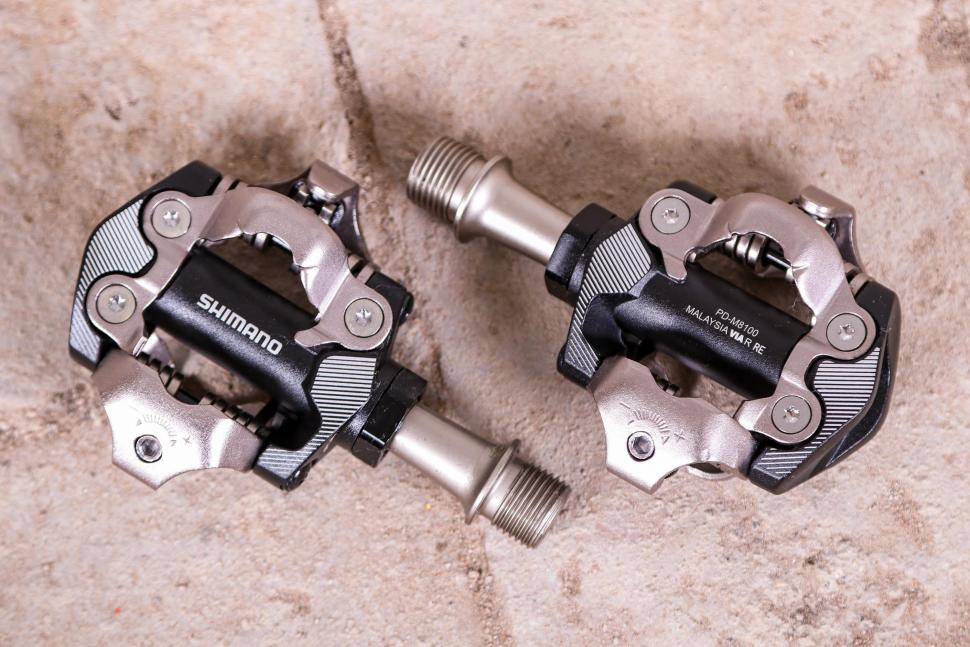





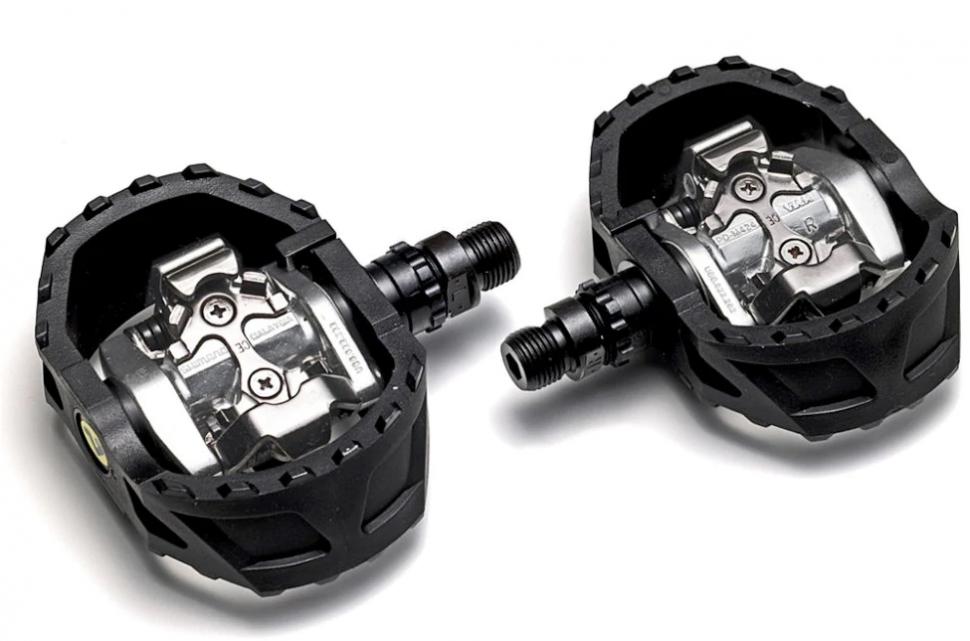
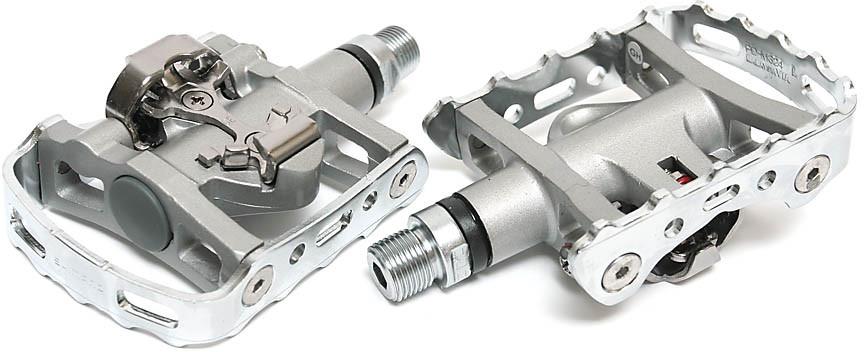


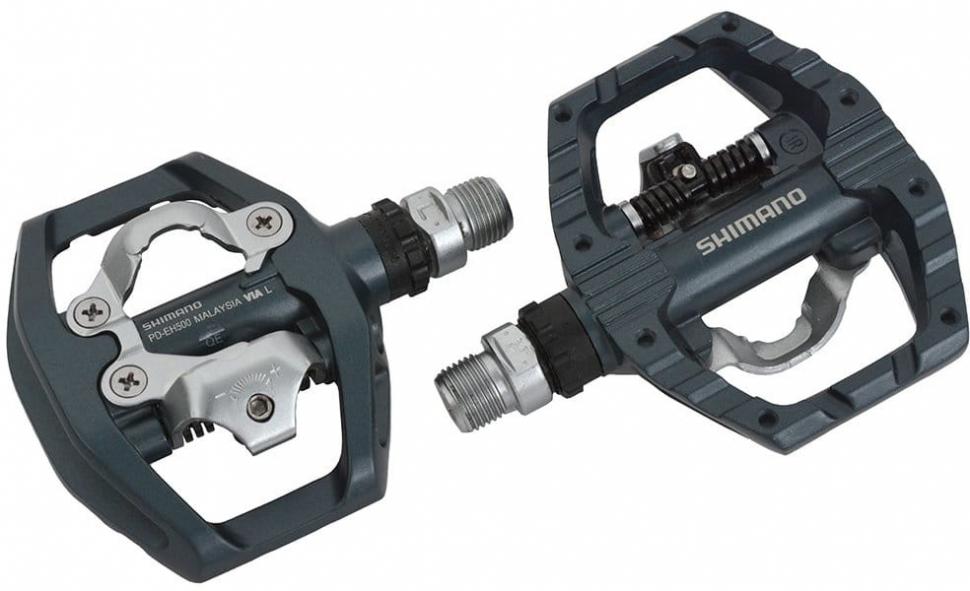
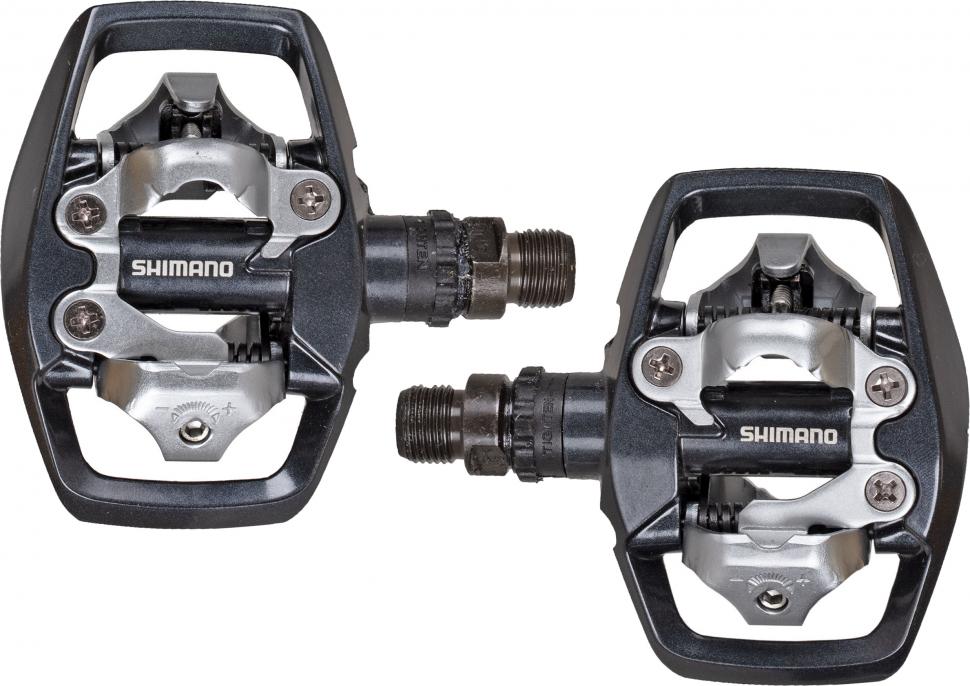








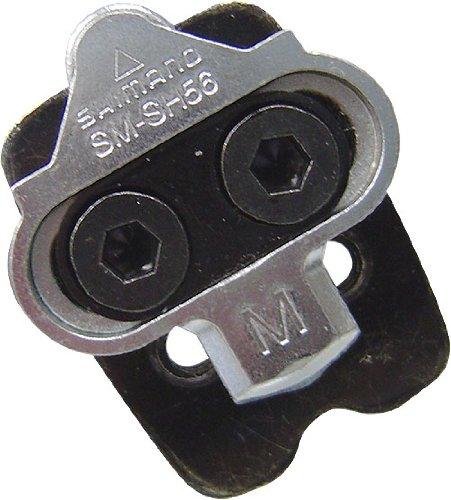

Add new comment
9 comments
M324 pedals.
Is the TL-PD63 tool the same one as the TL-PD33 tool noted on the Shimano parts sheet?
I've also just discovered the Shimano TL-PD300 tool, which seems to be a cheaper version.
Will see if my mate in Germany can get me one next time he comes over.
I've had M540 on my mountain bikes for years. The bearings do start to rattle a bit after long enough, even with re-greasing (as described above). They hit the sweet spot for quality -v- not being too upset if you batter them over rocks.
Treated my CX bike to the XT version, as I was lucky enough to get them very cheap virtually unused from someone that didn't get on with being clipped in.
Have just swapped the M324s on my errand bike to the PD-T8000 ones. Annoyed to read the comment that you need a special tool to service the M324 ones, as that was going to be one of my jobs this weekend.
Worth noting that when you're riding clipped into the M324 pedals, the cage hangs down quite a lot - I've caught the edge on the road a couple of times pedaling round corners. Hoping not to do that on the T8000s...
Went for the T8000s over the EH500 as they seemed slightly nicer and with a bigger platform to stand on.
I've actually got SH-52 cleats on one pair of my shoes, which are only supposed to be used on M858 pedals. Seem to work ok with M540s, but hard to get out of the M324s.
Always used the Ultegra level ones on my road bikes.
.
Outstanding article! Grazie mille.
.
More like this, please.
.
A very thorough reference. Cheers.
I have a few different shades of SPD-SL pedals that are all a doddle to maintain with the splurge through grease method. The PD-M324 though are another matter. Dave Atkinson's article - linked to above - claims that the "guts of the pedal is a well-finished Aluminium body that houses serviceable cup and cone bearings". But unlike the SPD-SL tool - that costs a couple of quid - the tool for servicing the M324 is around the price of the pedals themselves. I do a bodgy sort-of grease splurge every now and then to prevent the M324s from seizing up, but the cost of the tool is worth bearing in mind for those who expect to strip down their winter/commuter bike pedals to keep them running.
You're welcome!
Ah yes, the mind-buggeringly expensive TL- PD-63, a £40+ tool for servicing £40 pedals. If you can actually find one at all. Good point.
Thank you for a detailed article.
I love my bulletproof 540 spd's. Was thinking of upgrading to sl's but is it an upgrade or am I just trying to fix something that isn't broken?
I road cycle up to 200 miles a week and I never feel uncomfortable. At traffic stops the double sides make an easier take off a certainty.
I might give them a try for the "wide base of support". Only problem is my 540's just keep on going...
Nice article. Highly recommend spd 540. Bullet proof and nice bearing.
When i was feeling wealthy I bought 2 pair of xtr spd and I am a bit rough and have bent both pairs.
540 just take it and keep going.
Thank you! It's always really nice to get a positive comment. Much appreciated.
Deore XT seems to be the sweet spot if you're after low weight and durability. XTR is racing gear (or at least the pedals are) and does seem to be less robust.
540s and 520s are ridiculously durable for their modest cost.
One of the things I really like about almost all Shimano's pedals is that to regrease them all you have to do is take the complete axle-and-bearings unit out of the pedal body (using a spanner or a dirt-cheap plastic tool), fill the pedal body with grease and watch it push the old grease out as you screw the axle back in.